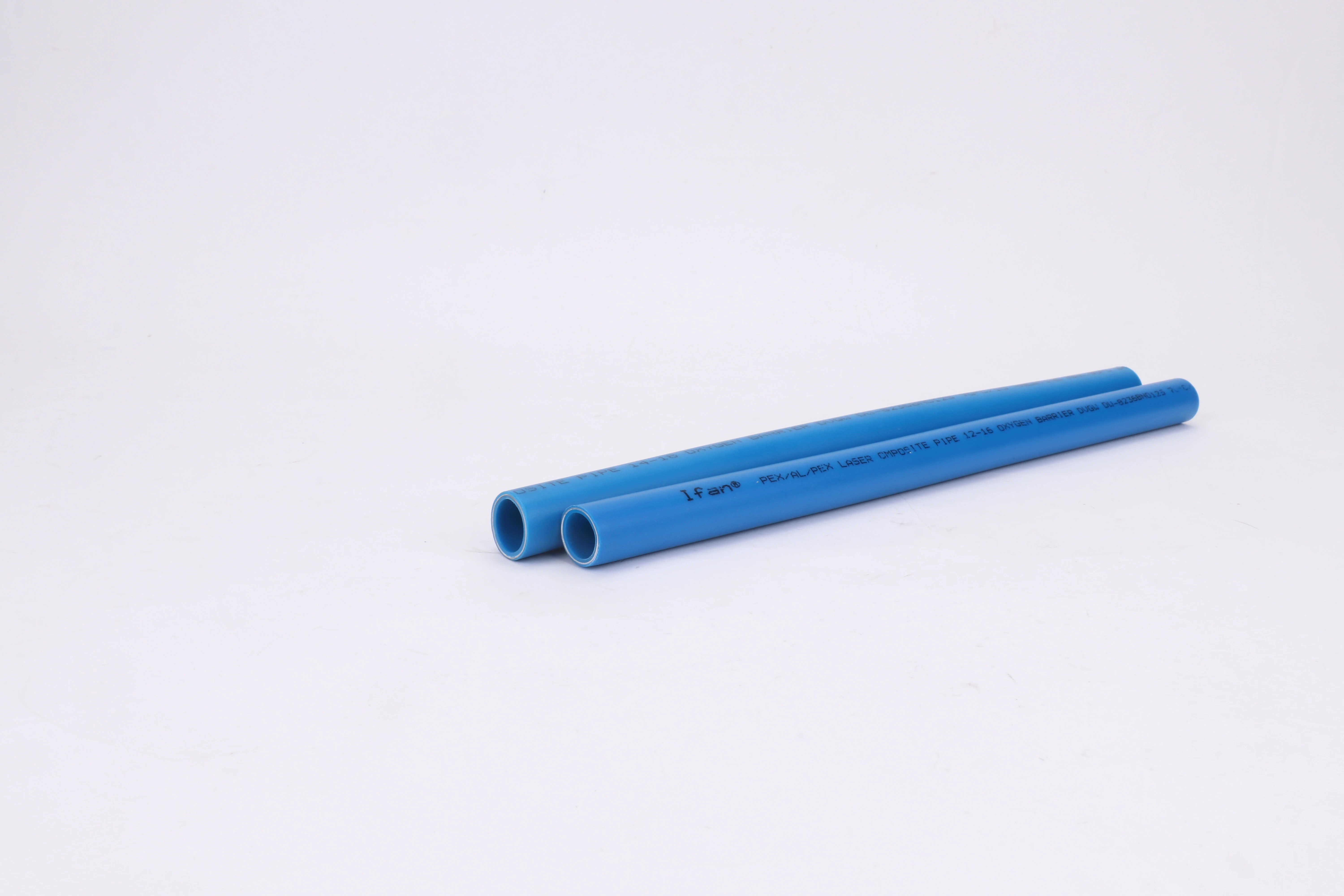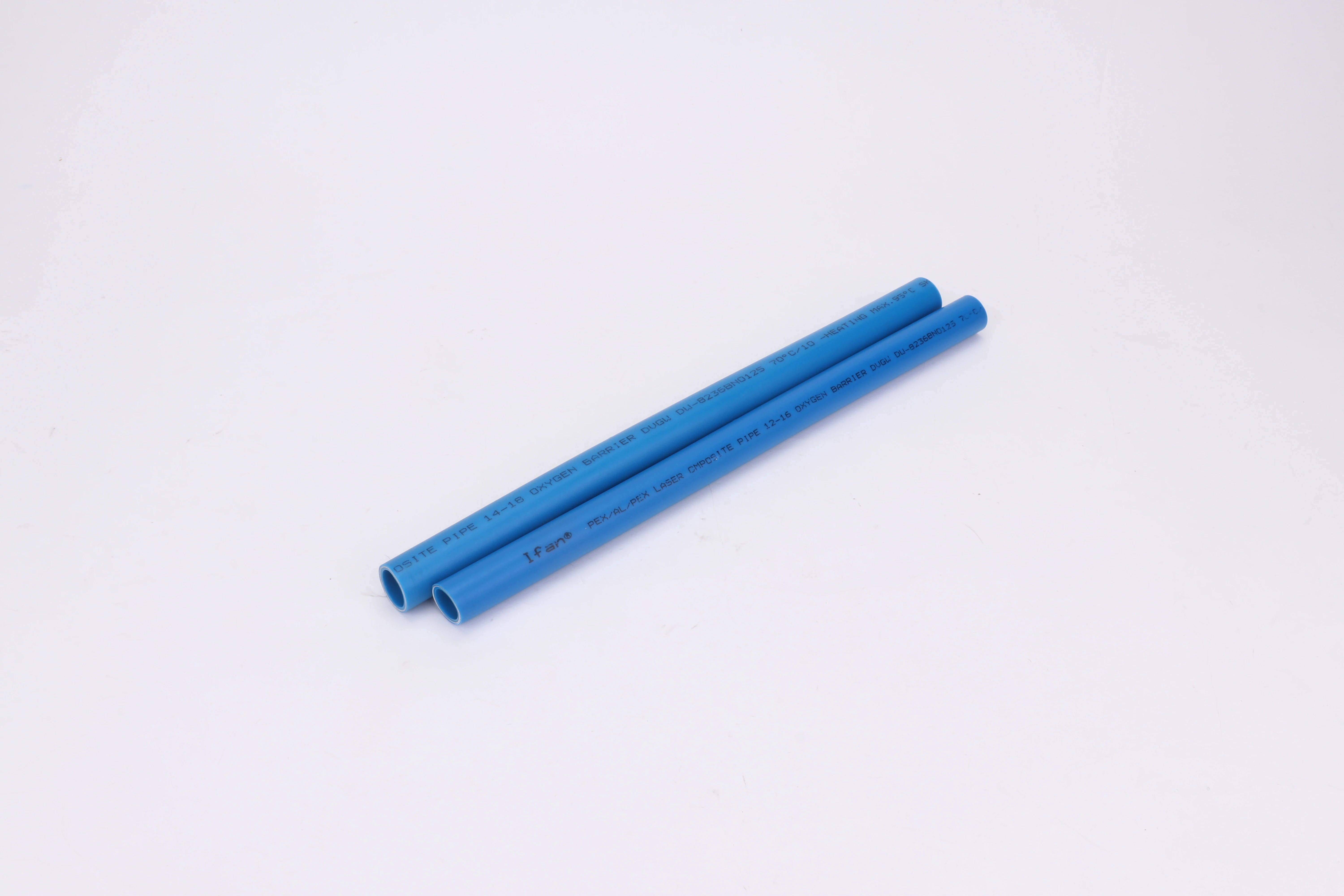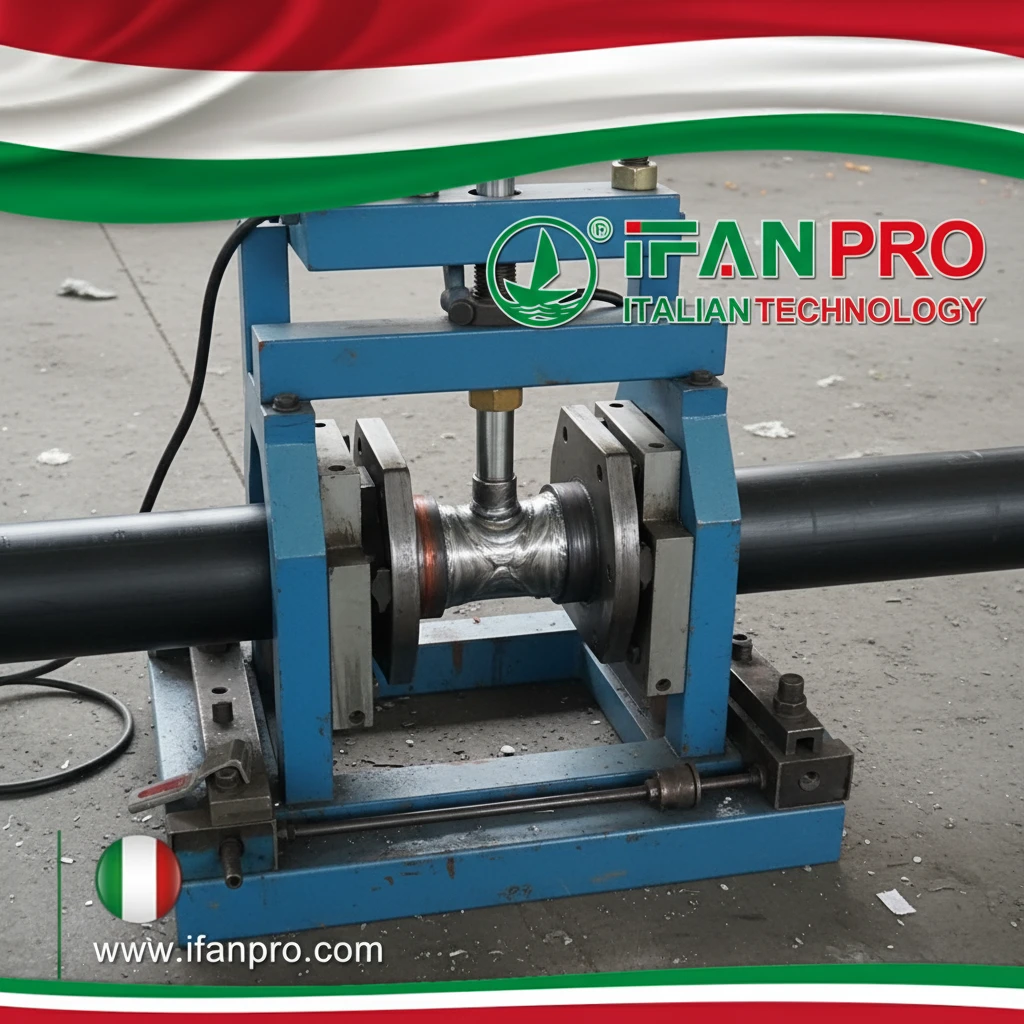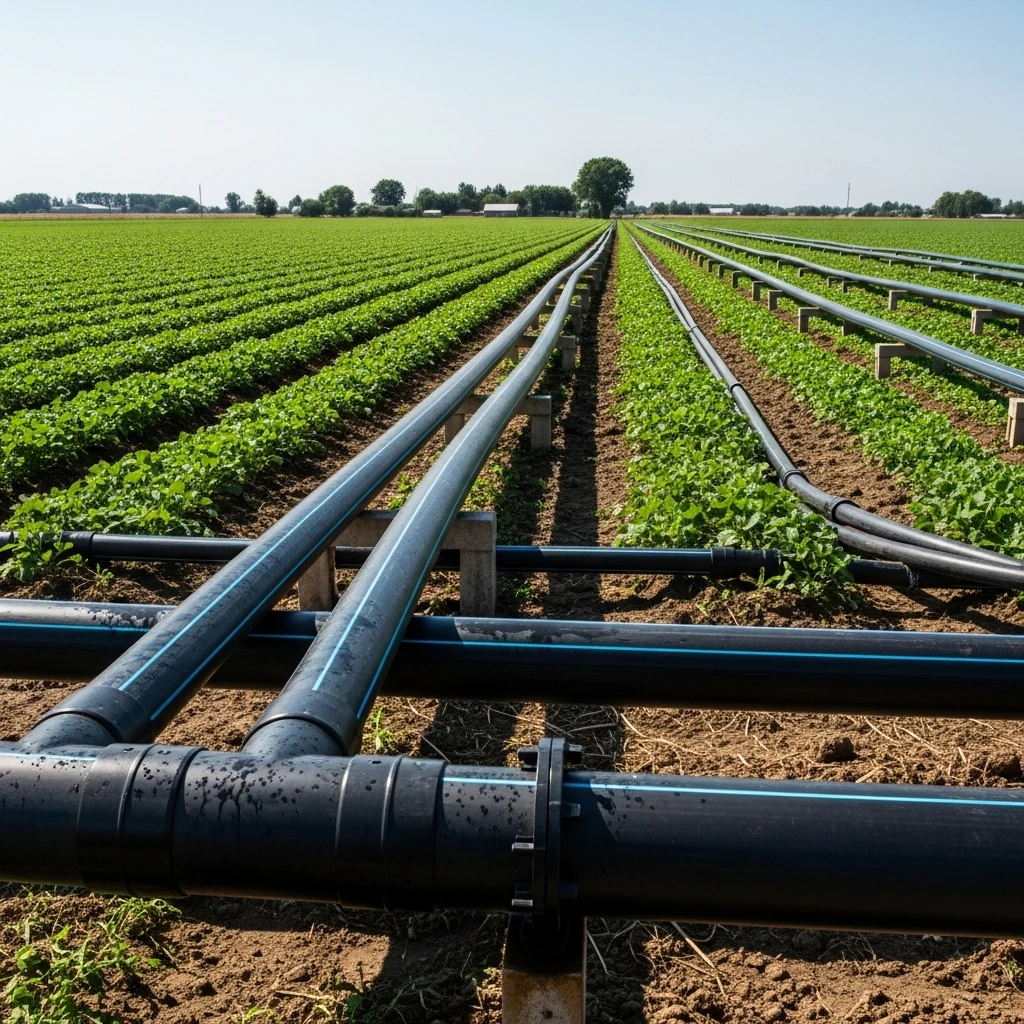Throughout my career installing and maintaining various plumbing systems, I’ve monitored the long-term performance of PEX across numerous installations. The durability of PEX plumbing has proven impressive, but its actual lifespan depends significantly on multiple factors that homeowners and professionals should understand.
A properly installed and maintained PEX plumbing system typically lasts 40-50 years, with many systems continuing to perform reliably beyond this timeframe. However, the actual lifespan varies based on water quality, installation techniques, environmental conditions, and maintenance practices, with some PEX systems potentially exceeding 50 years of service under optimal conditions.
Understanding what influences PEX longevity helps maximize its service life while recognizing when replacement becomes necessary. Let’s examine the key factors that determine how long your PEX system will reliably perform.
What factors determine the actual lifespan of PEX plumbing systems?
Multiple interconnected factors influence PEX system longevity, with some elements having significantly greater impact than others on overall lifespan.
The actual lifespan of PEX plumbing is determined by water temperature, chemical exposure, UV radiation, mechanical stress, and installation quality. Systems operating at lower temperatures with neutral pH water and proper installation typically reach maximum lifespan, while those exposed to high chlorine levels, excessive heat, or poor installation practices may fail decades earlier.
While PEX is remarkably durable, its service life isn’t guaranteed. Understanding these influencing factors helps predict and extend system longevity.
Temperature and Pressure Considerations
PEX lifespan decreases significantly as operating temperature increases. At standard residential water temperatures of 60-70°F (15-21°C), PEX can easily achieve 50+ years of service. However, at the maximum continuous temperature rating of 180°F (82°C), lifespan may reduce to 20-30 years due to accelerated polymer degradation.
System pressure also impacts longevity. While PEX handles standard residential pressure (40-80 PSI) effortlessly, constant pressure surges or water hammer events create cumulative stress that can reduce lifespan. Installing water hammer arrestors and maintaining stable system pressure helps preserve PEX integrity.
Environmental Exposure Factors
UV radiation represents one of the most significant threats to PEX longevity. When exposed to direct sunlight, PEX can become brittle and develop microcracks within months. Properly protected indoor installations maintain their integrity for decades, while exposed pipes may require replacement after just 2-3 years of UV exposure.
Chemical exposure from household cleaners, pesticides, or petroleum products can also degrade PEX over time. Additionally, installation in areas with rodent activity poses risk, as some rodents may chew through PEX pipes. Physical protection in vulnerable areas extends system life significantly.
Table: Factors Affecting PEX Lifespan
| Factor | Optimal Condition | Risk Condition | Lifespan Impact |
|---|---|---|---|
| Water Temperature | Below 140°F (60°C) | Consistently above 160°F (71°C) | 30+ year reduction at high temps |
| Chlorine Exposure | Below 2 ppm | Above 4 ppm continuously | 10-20 year reduction |
| UV Exposure | Fully protected | Direct sunlight exposure | Up to 90% reduction |
| Installation Quality | Professional installation | Poor techniques, kinks, stress | 50% or more reduction |
Manufacturing Quality and Standards
Not all PEX offers identical longevity. PEX manufactured to ASTM F876, F877, and NSF/ANSI 61 standards typically delivers more consistent performance and longer service life. Reputable manufacturers conduct extensive testing to verify their products meet 50-year lifespan projections under standard conditions.
The PEX type also influences durability. PEX-A generally offers superior stress crack resistance and fatigue endurance, potentially extending its useful life compared to PEX-B or PEX-C in applications with temperature cycling or physical stress.
How does water quality affect the long-term durability of PEX pipes?
Water quality significantly impacts PEX longevity, with certain chemical characteristics accelerating material degradation over time.
Chlorine and chloramine disinfectants in municipal water supplies gradually degrade PEX polymers through oxidation, potentially reducing lifespan by 10-20 years in systems with high disinfectant levels. Additionally, extreme pH levels, water hardness, and specific minerals can affect PEX durability, though generally less significantly than oxidizing disinfectants.

Municipal water treatment essential for public health unfortunately creates long-term challenges for PEX plumbing systems that homeowners should understand.
Disinfectant Impact on PEX
Chlorine and chloramine, while essential for controlling waterborne pathogens, initiate oxidative reactions within PEX polymers. This oxidation creates free radicals that break down molecular chains, eventually making the material brittle. The rate of degradation depends on:
- Disinfectant concentration (higher levels accelerate degradation)
- Water temperature (warmer water increases reaction rates)
- Exposure time (continuous exposure causes cumulative damage)
Most PEX manufacturers design their products to withstand typical municipal chlorine levels (1-4 ppm) for 50+ years. However, systems with consistently high disinfectant levels (>4 ppm) may experience significantly reduced lifespan. Modern PEX formulations with enhanced chlorine resistance perform better in these challenging conditions.
pH and Mineral Content Effects
Unlike metal pipes, PEX doesn’t corrode in acidic or alkaline water, but extreme pH levels can affect other system components that indirectly impact PEX. For instance, highly acidic water (pH <6.5) may corrode brass fittings connected to PEX, potentially causing leaks that require system intervention.
Water hardness generally doesn’t affect PEX itself, but mineral buildup can create two indirect issues:
- Reduced fixture flow requiring system flushing that stresses pipes
- Increased water heater operation raising system temperatures
- Accelerated corrosion of metal system components
Table: Water Quality Impact on PEX Longevity
| Water Parameter | Ideal Range | Risk Range | Effect on PEX |
|---|---|---|---|
| Chlorine Level | 0.5-2.0 ppm | Above 4.0 ppm | Polymer degradation, brittleness |
| pH Level | 6.5-8.5 | Below 6.0 or above 9.0 | Minimal direct effect, affects metals |
| Chloramine Level | 1.0-3.0 ppm | Above 4.0 ppm | Similar to chlorine, potentially less severe |
| Water Hardness | <7 gpg | Any level acceptable | No direct effect on PEX |
Water Quality Monitoring and Management
Regular water testing helps identify potential issues before they significantly impact PEX lifespan. Simple test strips can monitor chlorine levels and pH, while more comprehensive laboratory testing reveals chloramine concentrations and other parameters.
For homes with challenging water conditions, whole-house filtration systems can extend PEX lifespan by removing or neutralizing oxidizers before they enter the plumbing system. Carbon filtration effectively reduces chlorine, while more specialized systems may be needed for chloramine reduction.
What maintenance practices can extend the service life of PEX systems?
Proactive maintenance significantly extends PEX system lifespan by addressing potential issues before they cause material degradation or failure.
Regular inspections, proper pressure management, UV protection, and preventative flushing maximize PEX system longevity. Additionally, avoiding chemical exposure, maintaining stable temperatures, and addressing minor issues promptly can add decades to the expected service life of PEX plumbing systems.
For step-by-step PEX installation and maintenance guidance, see: PEX Pipe Installation & Maintenance Guide.
Inspection and Monitoring Protocols
Annual visual inspections of accessible PEX piping help identify early signs of potential issues. Key inspection points include:
- Color changes or whitening indicating UV exposure or chemical degradation
- Bulging or deformation suggesting previous freezing or over-pressure events
- Fitting corrosion that could lead to leaks requiring system disturbance
- Support integrity ensuring pipes don’t sag or rub against abrasive surfaces
Documenting inspection findings creates a valuable history that helps track system condition over time. Digital photographs stored with inspection notes provide excellent reference material for comparing year-to-year changes.
Pressure and Temperature Management
Maintaining stable system pressure between 40-60 PSI significantly reduces stress on PEX pipes and fittings. Installing a pressure-reducing valve if supply pressure exceeds 80 PSI prevents constant strain that can lead to premature aging. Water hammer arrestors protect against pressure surges that create cumulative stress damage.
Temperature management also extends PEX life. Setting water heaters to 120-140°F (49-60°C) rather than maximum temperatures reduces thermal stress. Insulating hot water lines maintains temperature with lower heater settings, while insulating cold water pipes in unconditioned spaces prevents freezing that can deform PEX even if it doesn’t cause immediate failure.
Table: PEX Maintenance Schedule for Maximum Longevity
| Maintenance Activity | Frequency | Procedure | Longevity Benefit |
|---|---|---|---|
| Visual Inspection | Annually | Check all accessible piping and supports | Early problem identification |
| Pressure Check | Quarterly | Verify pressure regulator function | Prevents over-pressure stress |
| Temperature Verification | Semi-annually | Confirm water heater settings | Reduces thermal degradation |
| System Flushing | Every 2-3 years | Flush sediment and debris | Maintains flow, reduces pump stress |
| Water Quality Test | Annually | Test chlorine, pH, hardness | Identifies degradation risks |
Preventative Protection Measures
Protecting PEX from UV exposure is crucial for exterior or exposed installations. UV-resistant paint or pipe wrap prevents solar degradation in areas where pipes receive direct sunlight. Similarly, protecting PEX from chemical exposure by ensuring proper storage of cleaners, solvents, and pesticides away from plumbing areas prevents accidental damage.
In rodent-prone areas, installing physical barriers around PEX pipes prevents chewing damage. Metal shielding or specially designed rodent-resistant pipe wrap provides effective protection without significantly impacting system performance.
How does PEX longevity compare to copper and CPVC piping materials?
PEX offers comparable longevity to copper with different failure mode characteristics, while generally outlasting CPVC in typical residential applications.
PEX typically matches copper’s 40-50 year lifespan but with different aging characteristics – copper fails through corrosion and scaling while PEX fails through oxidative degradation. CPVC generally offers the shortest lifespan at 20-30 years due to brittleness with age. Each material has distinct advantages that make it preferable in specific applications despite comparable longevity projections.

Understanding how these materials age differently helps select the optimal piping for specific applications and maintenance capabilities.
Copper vs. PEX Longevity
Copper and PEX typically achieve similar 50-year lifespans under ideal conditions, but their failure modes differ significantly. Copper tends to fail through:
- Pinhole leaks from corrosion in aggressive water
- Joint failures from thermal cycling or water hammer
- Flow reduction from mineral scale buildup
Meanwhile, PEX typically experiences:
- Brittleness from chlorine oxidation after decades
- Fitting issues rather than pipe failures
- Gradual stiffening reducing flexibility
The more predictable failure modes of copper (often showing discoloration or minor leaks before catastrophic failure) sometimes make it preferable in applications where early warning of impending failure is valuable. However, PEX’s resistance to scaling and corrosion makes it more consistent in varying water conditions.
CPVC Longevity Limitations
CPVC typically offers the shortest lifespan of the three materials, with 20-30 years being common. CPVC becomes increasingly brittle with age due to:
- UV degradation even through indirect exposure
- Chemical embrittlement from household cleaners
- Impact vulnerability that increases with age
- Installation stress that manifests years later
While CPVC costs less initially, its shorter service life often makes it less economical over the long term compared to PEX or copper. The material’s brittleness also makes it more vulnerable to damage during renovations or repairs long after installation.
Table: Plumbing Material Longevity Comparison
| Material | Typical Lifespan | Primary Failure Modes | Best Application |
|---|---|---|---|
| PEX | 40-50 years | Oxidative brittleness, fitting issues | Whole-house repipes, cold climates |
| Copper | 50+ years | Corrosion, scaling, pinhole leaks | High-temperature applications, exposed plumbing |
| CPVC | 20-30 years | Brittleness, joint failures, impact damage | Budget installations, warm climates |
Lifecycle Cost Considerations
While initial installation costs vary significantly, lifecycle costs tell a more complete story. Copper’s higher initial cost may be justified in applications where its failure warning characteristics are valuable. PEX’s moderate cost and long lifespan make it economically attractive for most residential applications. CPVC’s low initial cost must be balanced against earlier replacement needs.
The optimal choice depends on water quality, installation environment, and homeowner priorities. For most whole-house residential applications, PEX provides the best balance of longevity, performance, and cost-effectiveness.
Conclusion
PEX plumbing systems typically provide 40-50 years of reliable service when properly installed and maintained, with some systems continuing to perform well beyond this timeframe. The actual lifespan depends significantly on water quality, temperature management, and protection from UV exposure and chemical damage. While PEX matches copper’s longevity in most applications, it offers distinct advantages in freeze resistance, corrosion immunity, and installation efficiency. Regular maintenance including inspections, pressure management, and water quality monitoring maximizes PEX system life, while understanding comparative material characteristics ensures appropriate application selection. Ultimately, PEX represents an excellent balance of longevity, performance, and cost-effectiveness for most residential and commercial plumbing applications.













Recent Comments